
The River Rivelin is a river in Sheffield, South Yorkshire, England.

Malin Bridge is a suburb of the city of Sheffield, England. It is located at grid reference SK325893 and stands 2½ miles north-west of the city centre where the rivers Loxley and Rivelin meet. Malin Bridge is only a small district centred on the road bridge over the River Loxley which carries the B6076 road to Stannington ; it is surrounded by the suburbs of Hillsborough, Wisewood, Walkley and Stannington.
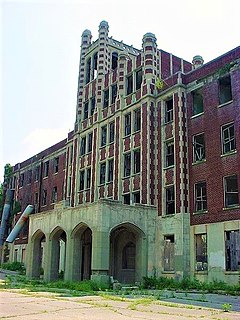
The Waverly Hills Sanatorium is a former sanatorium located in southwestern Louisville/Jefferson County, Kentucky.
King Edward VII Hospital may refer to:

The Royal National Orthopaedic Hospital (RNOH) is a specialist orthopaedic hospital located in the London Borough of Harrow, United Kingdom, and a part of Royal National Orthopaedic Hospital NHS Trust. It provides the most comprehensive range of neuro-musculoskeletal health care in the UK, including acute spinal injury, complex bone tumour treatment, orthopaedic medicine and specialist rehabilitation for chronic back pain. The RNOH is a major teaching centre and around 20% of orthopaedic surgeons in the UK receive training there.
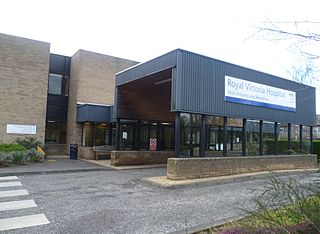
The Royal Victoria Hospital was a health facility at Craigleith Road in the north-west of Edinburgh, Scotland. It was formerly the main Medicine for the Older Adult assessment and rehabilitation hospital for the north of Edinburgh. It closed in 2012, then briefly reopened to ease pressure on acute beds in the region. The facility finally closed in early 2017 and was not in use when a fire caused damage to buildings in May 2017. It was managed by NHS Lothian.

The Royal Infirmary was a hospital in Upperthorpe, Sheffield, South Yorkshire, England.

Heatherwood Hospital is an NHS hospital in Ascot, Berkshire. It is managed by Frimley Health NHS Foundation Trust.

The Royal Orthopaedic Hospital (ROH) is a National Health Service specialist orthopaedic hospital situated in Northfield, Birmingham, England. The ROH specialises in bone and joint problems.

Rivelin Dams are a pair of water storage reservoirs situated in the upper part of the Rivelin Valley, 5 miles (8 km) west of Sheffield in South Yorkshire, England. The dams are owned by Yorkshire Water and provide water to 319,000 people as well as compensation water for the River Rivelin. They are named Upper and Lower and fall just within the eastern boundary of the Peak District.

Middlewood Hospital is a former psychiatric hospital situated between the suburbs of Middlewood and Wadsley in the City of Sheffield, South Yorkshire, England. It was also known as the South Yorkshire Asylum (1872–1888), the West Riding Asylum, Wadsley (1889–1929) and Wadsley Mental Hospital (1930–1948). It was one of four hospitals that made up The West Riding General Asylums Committee. It closed in 1996 and is now a private housing development called Wadsley Park Village.
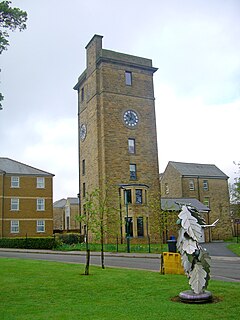
Lodge Moor Hospital is a former isolation hospital on Redmires Road in the Lodge Moor area of the City of Sheffield, England. The hospital which opened in 1888 and closed in 1994 initially treated Smallpox but soon broadened its treatment to other infectious diseases and in its latter years expanded to provide more general nursing, notably spinal injuries and chest medicine. At the time of closure, the hospital was operated by the Central Sheffield University Hospitals NHS Trust.

Rivelin Valley Park is a public recreation area in the Rivelin Valley area of Sheffield, England. The facilities consist of a playground and a small water park as well as a café. The park is situated on the Rivelin Valley Nature Trail, which is maintained by volunteers from the Rivelin Valley Conservation Group.

The Belgrave Hospital for Children in Kennington, London, United Kingdom was a voluntary hospital founded in Pimlico, London in 1866. A new hospital building was constructed between 1899 and 1926 at 1 Clapham Road from a design by Charles Holden. It was designated a Grade II* listed building in 1981 and is currently residential flats.

Storrs is a hamlet within the boundaries of the City of Sheffield in England, it is situated 6.5 km west-northwest of the city centre. Storrs is located between the suburb of Stannington and the village of Dungworth in the civil parish of Bradfield at a height of 210 metres above sea level between the Loxley and Rivelin valleys. Although historically a farming settlement, water-powered milling on the Storrs Brook and small scale cutlery making has also taken place in the hamlet.

Hollow Meadows is a hamlet in the civil parish of Bradfield, west of Sheffield in South Yorkshire, England. It lies along the A57 road, between Moscar and the Rivelin Valley.
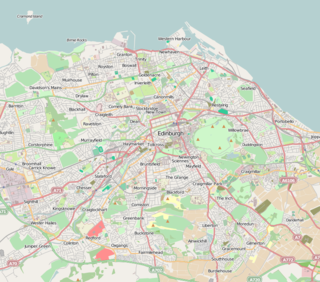
The Princess Margaret Rose Orthopaedic Hospital was a hospital in Fairmilehead, Edinburgh, opened in 1932 and closed in 2000. After closure, with services transferred to the new Royal Infirmary of Edinburgh, it was demolished and the site sold for housing.
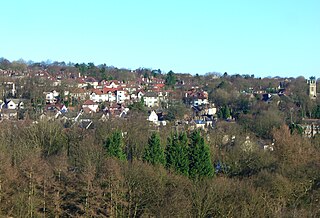
Fulwood is a residential suburb and ward of the City of Sheffield in England, it lies 5.5 km west-southwest of the city centre. Formerly an ancient settlement and village on the Porter Brook, it became integrated into the city in the 1930s. It is bounded by the suburbs of Lodge Moor to the NW, Ranmoor to the east and Crosspool to the NE. The open countryside of the Peak District lies to the west and SW. The sub districts of Stumperlowe and Goole Green are part of the suburb. The population of the ward at the 2011 Census was 18,233. Fulwood is located in the Sheffield Hallam constituency which, as of the 2019 general election voted Labour.

Sully Hospital was a psychiatric hospital in Sully, Vale of Glamorgan, Wales. It has since been converted into luxury apartments and remains a Grade II* listed building.
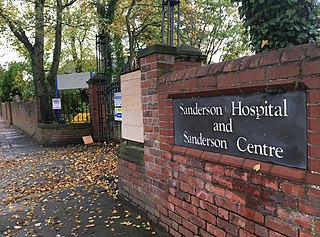
Sanderson Hospital was an orthopaedic hospital for children and an elderly care facility used by the NHS in Gosforth, Newcastle upon Tyne, UK.




















